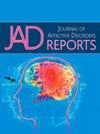Predictors of disordered eating and/or eating disorders in children and adolescents in the Arab World: A systematic review and meta-analysis
Q3 Psychology
引用次数: 0
Abstract
Introduction
The prevalence of disordered eating (DE) among children and adolescents is increasing in Arab countries. This systematic review explores the predictors of DE and eating disorders (EDs) in this demographic.
Methods
We searched PUBMED, MEDLINE, CINAHL, EMBASE, PsycINFO, Google Scholar, Web of Science Core Collection, ProQuest, Al Manhal, Al-Masdar, the website of the World Bank, and the grey literature for relevant studies, without language or time restrictions. We extracted data on study characteristics, methods, and results, and assessed the risk of bias using the MMAT tool. We performed an operate narrative synthesis of the studies adopting a bivariate vs. multivariate analysis, and meta-analyzed homogeneous studies adopting a multivariate analysis using RevMan 5.4.
Results
We included 36 studies and meta-analyzed 8. The risk of bias was assessed as high to unclear for a large proportion of the included studies. The predictors were categorized across biological, social, and psychological domains, but there was no consistency across studies, except for peer pressure. In the meta-analysis, excess body weight (OR=1.89; 95 %CI: 1.44, 2.49), female sex (OR=1.61; 95 %CI: 1.26, 2.06), urbanicity (OR=3.21; 95 %CI: 2.53, 4.08), perceived media pressure (OR=1.40; 95 %CI: 1.27, 1.54), and body shape dissatisfaction (OR=4.89; 95 %CI: 3.60, 6.66) predicted DE/EDs.
Conclusion
Culturally-sensitive prevention and intervention strategies with particular attention to perceived media pressure, are needed to address DE in children and adolescents.
阿拉伯世界儿童和青少年饮食失调和/或饮食失调的预测因素:系统回顾和荟萃分析
在阿拉伯国家,儿童和青少年中饮食失调(DE)的患病率正在上升。本系统综述探讨了这一人群中DE和饮食失调(EDs)的预测因素。方法检索PUBMED、MEDLINE、CINAHL、EMBASE、PsycINFO、谷歌Scholar、Web of Science Core Collection、ProQuest、Al Manhal、Al- masdar、世界银行网站及灰色文献等相关研究,不受语言和时间限制。我们提取有关研究特征、方法和结果的数据,并使用MMAT工具评估偏倚风险。我们使用RevMan 5.4对采用双变量和多变量分析的研究进行了综合叙述,并对采用多变量分析的同质研究进行了荟萃分析。结果纳入36项研究,荟萃分析8项。在纳入的大部分研究中,偏倚风险被评估为高至不明确。预测因素在生物学、社会和心理学领域被分类,但除了同伴压力外,其他研究没有一致性。在meta分析中,体重超标(OR=1.89;95% CI: 1.44, 2.49),女性(OR=1.61;95% CI: 1.26, 2.06),城市化(OR=3.21;95% CI: 2.53, 4.08),感知介质压力(OR=1.40;95% CI: 1.27, 1.54)和体型不满意(OR=4.89;95% CI: 3.60, 6.66)预测DE/EDs。结论针对儿童和青少年的DE,需要采取文化敏感的预防和干预策略,特别关注感知到的媒体压力。
本文章由计算机程序翻译,如有差异,请以英文原文为准。
求助全文
约1分钟内获得全文
求助全文
来源期刊

Journal of Affective Disorders Reports
Psychology-Clinical Psychology
CiteScore
3.80
自引率
0.00%
发文量
137
审稿时长
134 days
 求助内容:
求助内容: 应助结果提醒方式:
应助结果提醒方式:


